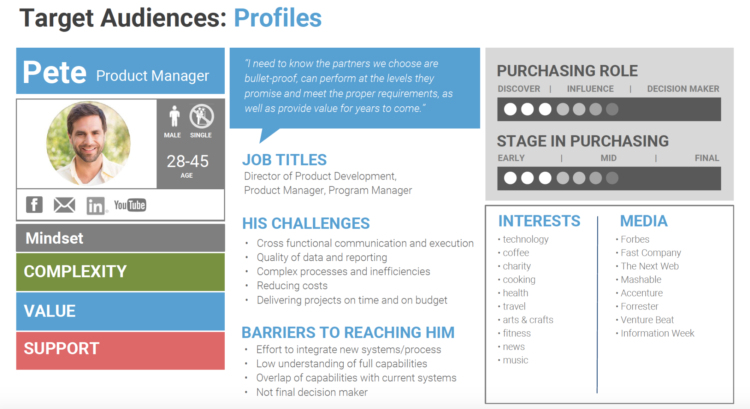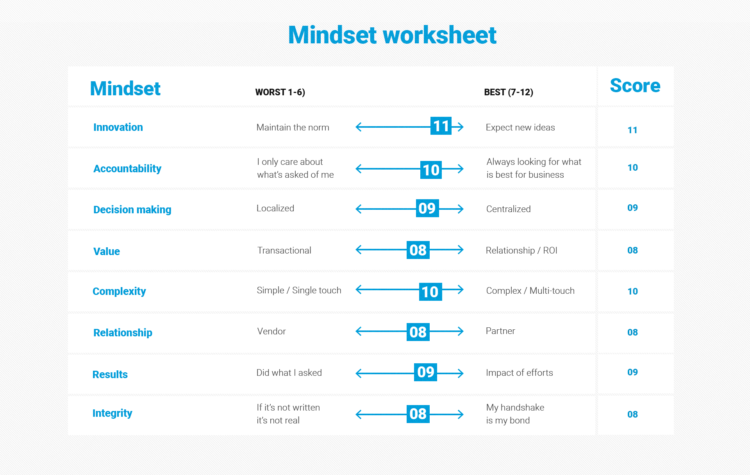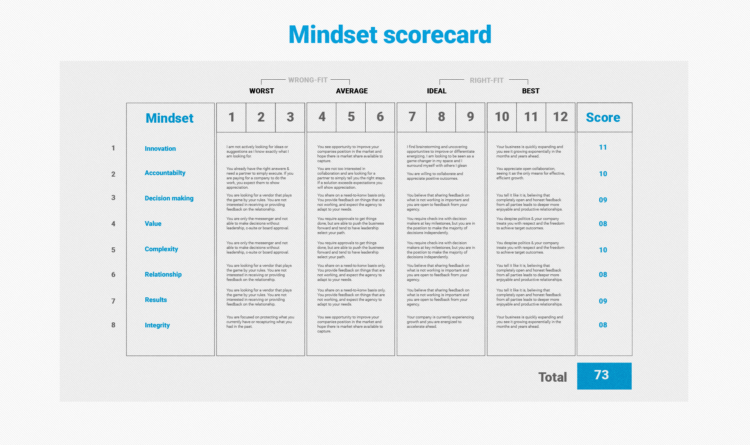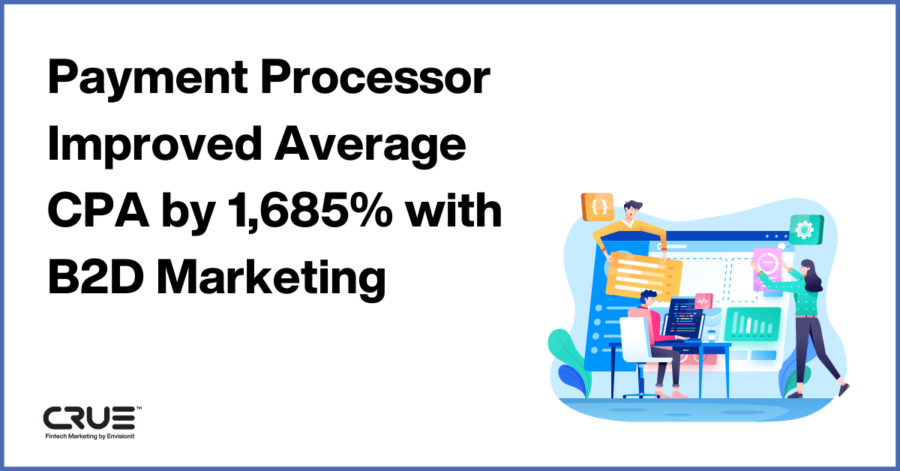There’s a difference between a customer and a right-fit customer. A right-fit customer tells people about your product and keys you in on the challenges they face in their job and how you can do more to address them. It’s a relationship, not just a transaction, and one that can really accelerate your growth (and make you enjoy going to work every day).
To find that right-fit customer who is tired of legacy financial systems and ready for your technology, you have to understand who they are, where they get information, what their needs/challenges are, and how they think and talk about things—and you have to share this with everyone on your marketing and sales teams. Customer profiles keep your messaging focused on defining your product in the context of your customers’ goals and making your technology relevant in their lives.
Advancements in data and targeting technologies from marketing platforms have enabled marketers to apply detailed customer insights to efficiently reach their right-fit customers. But these technological advancements only work if you know what and who you’re looking for.
Identifying your right-fit customers
Whether you’re producing your own research or purchasing it from a third-party, here’s the data you need to identify your right-fit customers:
- Goals of the purchase of your tech and pain points it resolves
- Barriers to purchase
- Decision-maker and influencer information: job titles, occupation and roles, age, gender, education level, income, marital status, geographic location, and interests
Best places to look for this data
Your data should come from a variety of sources. Some of the sources we use at Envisionit to define audiences include:
- CRM data
- Engagement reports from third-party platforms (e.g. analytics or social media platforms)
- Interviewing key stakeholders and customers
- Third-party research
The profile

Let’s review an example of a profile we recently created. First, it’s important to understand how we establish and utilize customer “mindset.” In a recent interview with Todd Brook, CEO at Envisionit, Brook defines mindset marketing as a way to determine and measure the “optimum mindset of a customer that will return maximum results.” To do this, we first define eight key mindset attributes that are important to the company or brand. We then not only define how each attribute is perceived in the mind of a best-case (or “right-fit”) customer but also how each is perceived in a worse-case customer.

Once these are established, we are able to build out a scoring mechanism—or “Mindset Scorecard”—that allows us to focus in on avoiding the worst and only recruiting the best prospective customers. This way “you’re investing your time and money to win the right type of customers faster,” according to Brook.

Now, in this example we know that the Product Manager is an audience we would like to target. On the left under “Mindset,” we’ve identified how our Project Manager’s top 3 mindset attributes align with the brand (Complexity, Value, Support). Our team then leverages the Mindset Scorecard, which informs us that Pete wants an in-depth understanding of the technology (is OK with Complexity), that he’s focused on how the solution will deliver value to his organization (might like a white paper focused on the total cost of ownership, for example) and appreciates Support (is looking for a partner to integrate and deploy, in this particular case, the API).
In the middle column, we attribute a quote to Pete. This is the piece of the profile where people really begin to understand how he thinks and how to appeal to him. If we nail Pete’s voice, we have a better chance of connecting with him.
In the right column, we’ve noted position in the purchasing decision. A lot of fintech solutions need buy-in across leadership, and the winning arguments for adoption differ depending on goals and responsibilities of the role. Sometimes the best way to influence procurement is by moving up the chain and building the case starting with influencers and discoverers who may not have a leadership position but are eager to deliver value.
Profiles should inform every aspect of your sales and marketing strategies. They are the first step in developing personalization strategies that can have a tremendous impact on your bottom line results. Depending on the content and information provided, they can be used for:
- Informing highly-targeted brand messaging strategies
- Personalization of content marketing efforts
- Development of sales and nurturing tactics
- Paid media creative and targeting strategies
- Website and landing page content & structure
It’s more than data. It’s connected insights.
While everyone is obsessed with customer data, it’s important you transform this data into a fuller picture of your ideal or “right-fit” customer. The fuller the picture you create, the easier it will be to connect with the people who can move your business forward.











